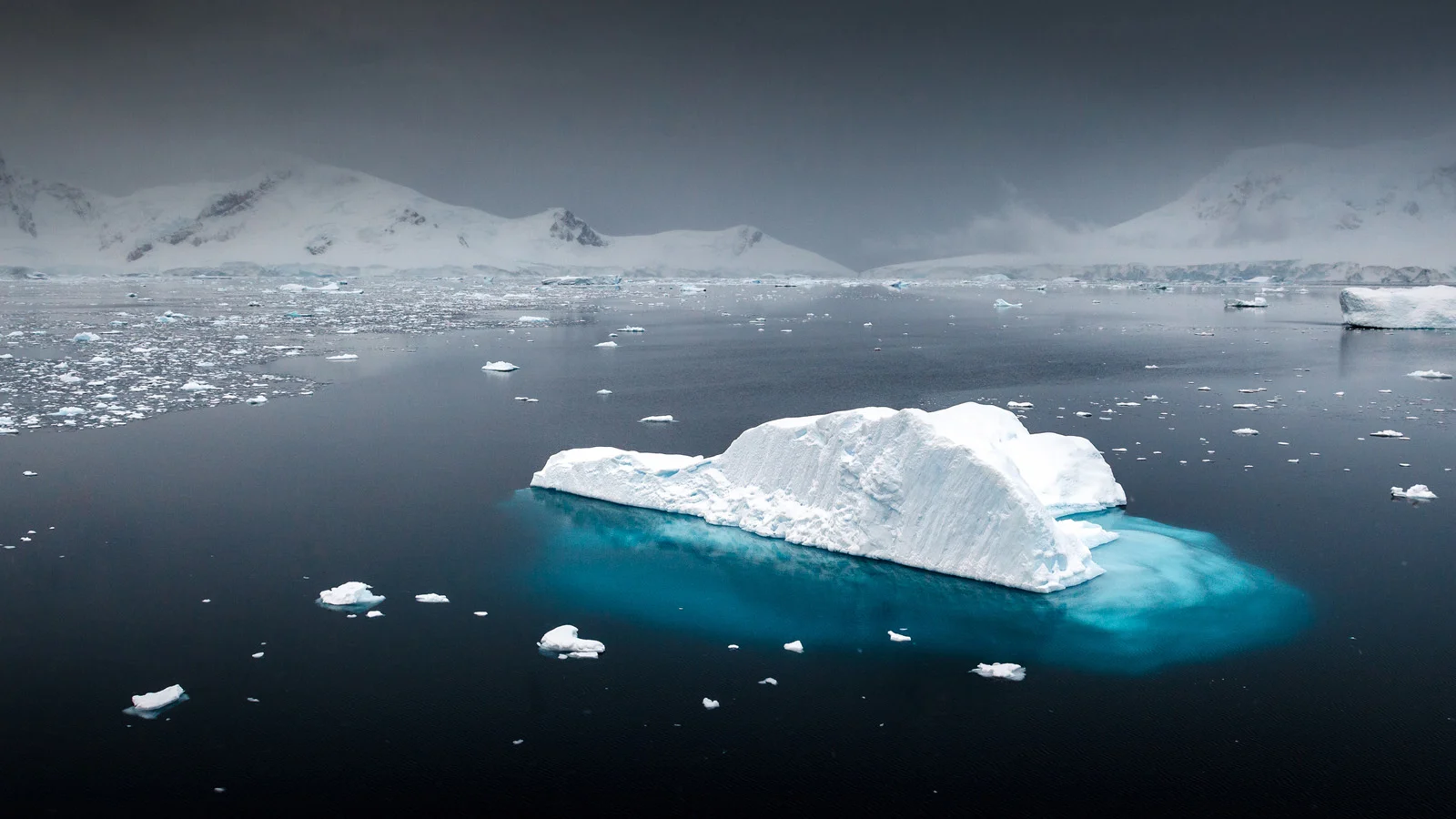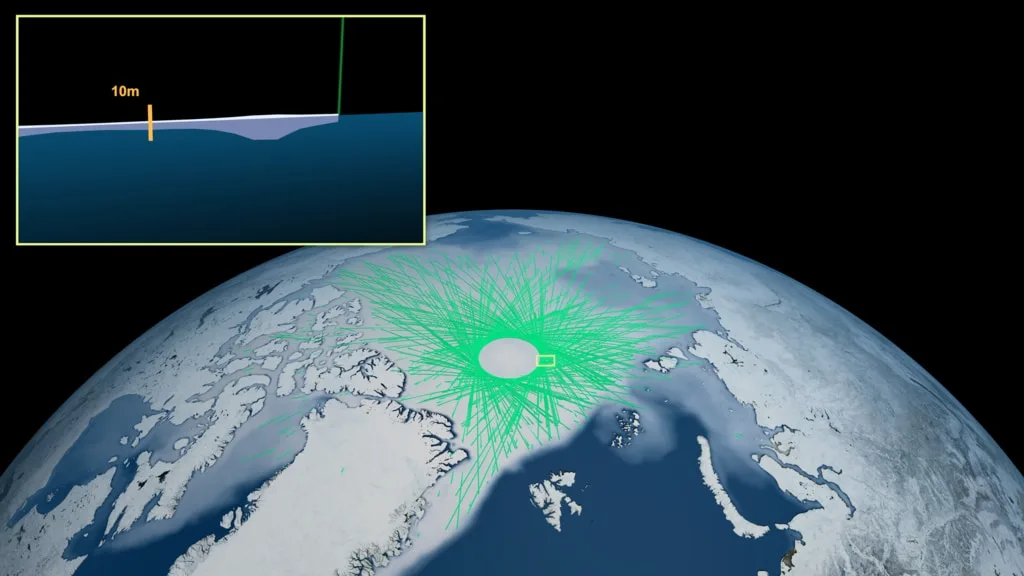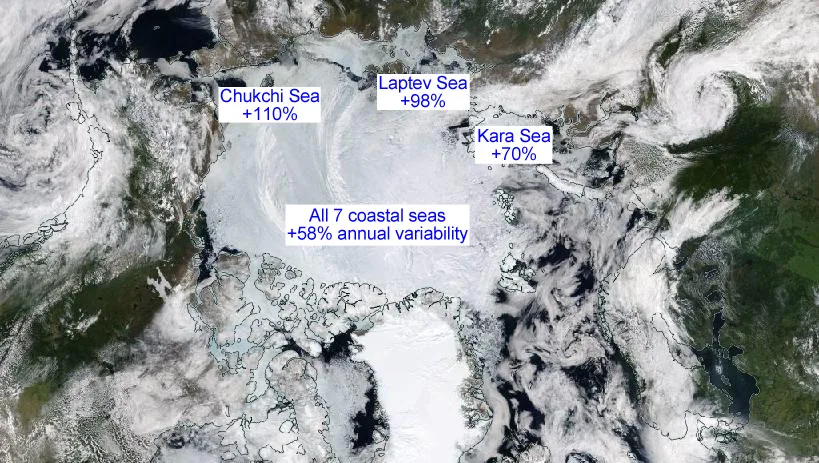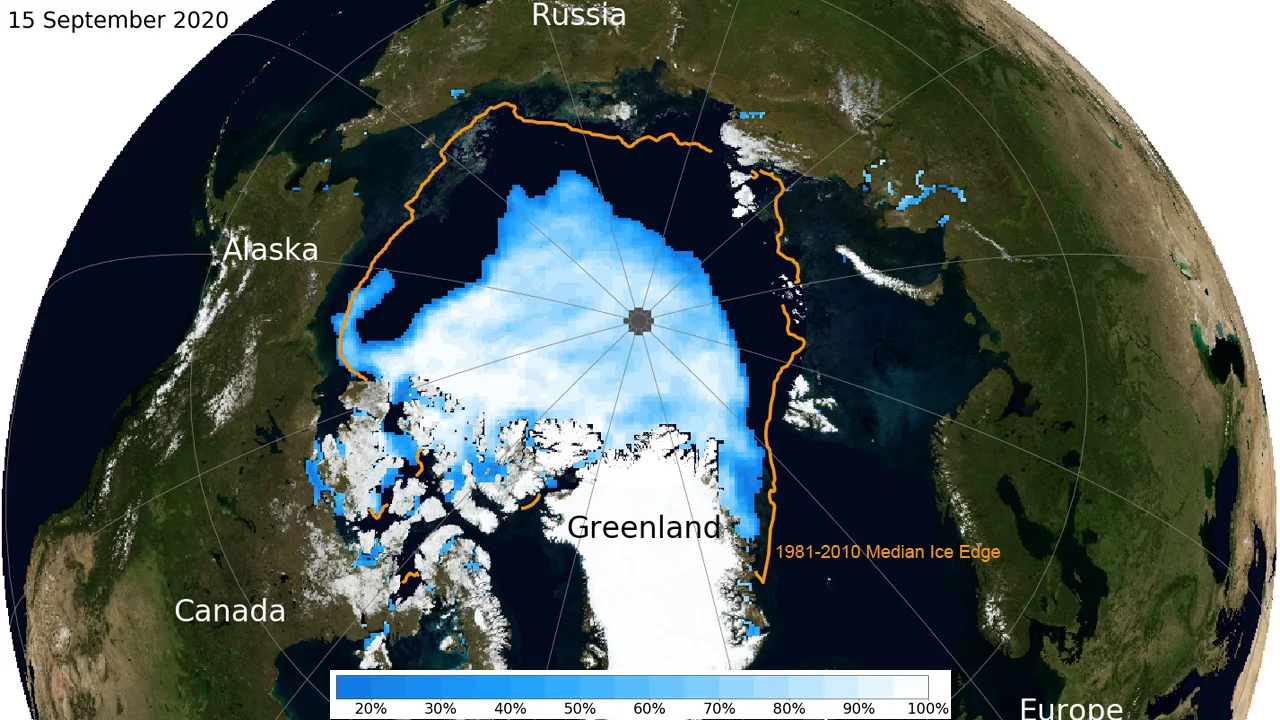
Arctic sea ice is thinning faster than we thought
New research reveals that sea ice along Arctic coastlines is much thinner than previous estimates led us to believe.
Arctic sea ice has been shrinking for decades, but new research now shows that the ice has been thinning up to twice as fast as we once thought.
Satellites circling Earth have been documenting the rapid decline in the extent and thickness of Arctic sea ice for over 40 years now. Yet, while measuring ice extent from space is fairly direct, measuring ice thickness requires a few more steps because only a small portion of the ice protrudes above the water.
As they orbit the planet, satellites read the distance between themselves and the surface of the water and ice they are passing over. This provides both the water level and the height the ice sticks up above that level. That height, however, only accounts for around 10 per cent of the total thickness of the ice. The other 90 per cent lies beneath the water, where the satellite cannot directly measure it.
The exact amount of ice that is visible above the water level depends on the densities of both the water and the ice. With these values and the satellite data showing the height of the ice surface above the water, scientists can then calculate the total thickness of the ice.

This visualization shows how NASA's ICESat-2 satellite measures ice thickness from space. Credit: NASA's Scientific Visualization Studio
However, there is one extra step needed. Sea ice typically has a certain amount of snow resting on top of it. This snow not only adds to the height of the surface above the water, its weight also pushes the ice farther down under the water. So, to get the true ice thickness, you need to account for this snow. To do so, scientists apply a correction based on direct measurements of snow cover, which were taken from atop sea ice years ago.
In a new study, researchers show that the map used to apply these corrections is badly outdated, and has not been accounting for the changes that come with the warming Arctic. Thus, estimates of sea ice thickness have been overestimated for some time.
"Previous calculations of sea ice thickness are based on a snow map last updated 20 years ago," Robbie Mallett, the lead author of the study from the University College London, said in a UCL press release. "Because sea ice has begun forming later and later in the year, the snow on top has less time to accumulate. Our calculations account for this declining snow depth for the first time, and suggest the sea ice is thinning faster than we thought."
To replace the static map, Mallett and his team — which included two researchers from the University of Manitoba — used a computer model called SnowModel-LG. Based on air temperature, snowfall amounts, and the motion of the sea ice as it drifts around the Arctic, this model tracks how snow cover on sea ice varies over time. This provides a more accurate estimate of snow cover on sea ice, for both the ice that manages to survive year to year and for newly formed ice.
Using this new model, the researchers found that for three coastal seas — Kara, Laptev, and Chukchi — the rate of sea ice thinning increased by 70, 98, and 110 per cent, respectively, compared to calculations using the old reference maps. Across all seven coastal seas around the Arctic, they found that the year-to-year variability of sea ice thickness increased by 58 per cent. This shows the importance of having more up-to-date and dynamic snow accumulation estimates.

This satellite map of the Arctic has been labelled with the increased rates of sea ice thinning and variability from this new study. Credits: Map from NASA Worldview, Data c/o Mallett, et al., 2021.
"The thickness of sea ice is a sensitive indicator of the health of the Arctic," Mallett said. "It is important as thicker ice acts as an insulating blanket, stopping the ocean from warming up the atmosphere in winter, and protecting the ocean from the sunshine in summer. Thinner ice is also less likely to survive during the Arctic summer melt."
With declining summer Arctic sea ice extent, the ice that survives year to year is currently limited to the western side of the Arctic, near Greenland and the Canadian Arctic Archipelago. Some small pockets of ice do still survive along the coasts of the eastern Arctic Ocean, but these are diminishing quickly.

This map of the Arctic sea ice minimum for 2020 shows how much the ice has diminished compared to the 1981-2020 median. Blue indicates lower concentrations of sea ice in the outer edges of the ice extent. Credit: NSIDC
"There are a number of uncertainties in measuring sea ice thickness but we believe our new calculations are a major step forward in terms of more accurately interpreting the data we have from satellites," study co-author Julienne Stroeve, who is a professor at University College London, said in the press release.
"We hope this work can be used to better assess the performance of climate models that forecast the effects of long-term climate change in the Arctic — a region that is warming at three times the global rate, and whose millions of square kilometres of ice are essential for keeping the planet cool."












